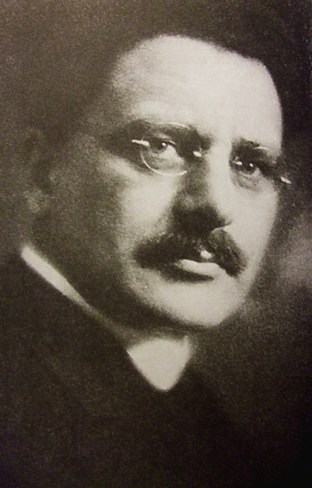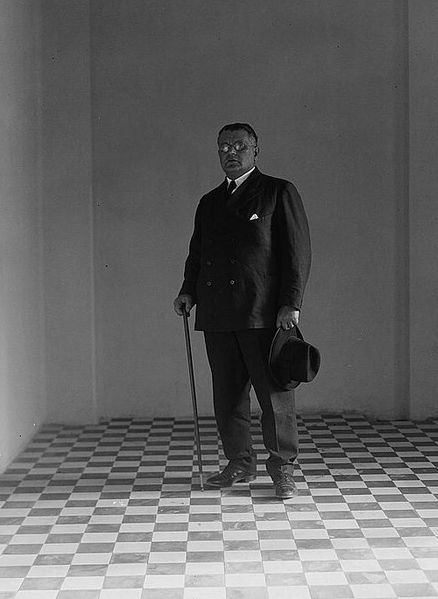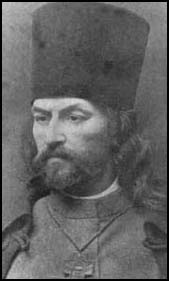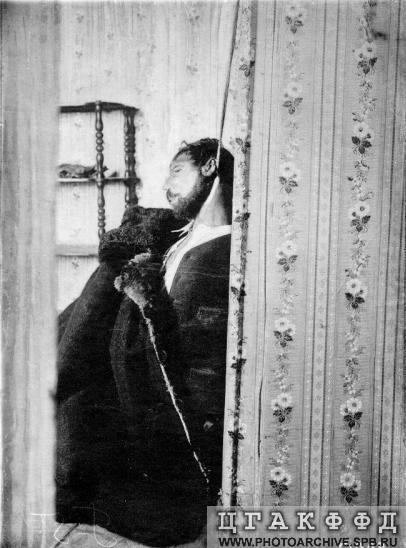<Back to Index>
- Socialist and Zionist Leader Pyotr "Pinhas" Moiseyevich Rutenberg, 1879
- Workers' Leader and Agent of the Okhrana Georgiy Apollonovich Gapon, 1870
PAGE SPONSOR


Pinhas Rutenberg (February 5, 1879 – January 3, 1942; Russian: Пётр Моисеевич Рутенберг, Pyotr Moiseyevich Rutenberg; Hebrew: פנחס רוטנברג) was a prominent engineer and a businessman, a Russian socialist and a Zionist leader. He played an active role in two Russian revolutions, in 1905 and 1917. During World War I, he was among the founders of the Jewish Legion and of the American Jewish Congress. Later, in the British Mandate of Palestine, he had obtained an exclusive concession for production and distribution of electric power and founded the Palestine Electric Company, currently the Israel Electric Corporation. Rutenberg also participated in establishing the Haganah, a nucleus of the future Israel Defense Forces, and served as a President of the Jewish National Council.
Pinhas Rutenberg was born in the town of Romny, north of Poltava, Russian Empire (now in Ukraine). After graduating from a practical high school, he enrolled at the Technology Institute in Saint Petersburg and joined the Socialist - Revolutionary Party (also known as the S.R. or Eser party). He worked as a workshop manager at the Putilov plant, the largest Petersburg industry. The plant was a center of the Assembly of Russian Factory and Plant Workers, founded by a popular working class leader, Father George Gapon in 1903. Gapon collaborated in secret with the Police Department (the Okhrana), which believed this is the way to control the workers movement. Rutenberg became Gapon’s friend, which made him a noticeable figure in the S.R. party.
On Sunday, January 9, 1905 (Old Style date) Gapon organized a "peaceful workers’ procession" to the Winter Palace in order to present a petition to the Czar. Rutenberg participated, by his party's approval. In a tragic turn of events, army pickets fired directly into the crowd, and hundreds were killed. Amid the panic, Rutenberg retained self control and actually saved Gapon’s life, taking him away from gun fire. This incident, known as the Bloody Sunday (1905), sparked the first Russian Revolution of 1905.
Gapon and Rutenberg fled abroad, being welcomed in Europe both by prominent Russian emigrants Georgy Plekhanov, Vladimir Lenin, Pyotr Kropotkin, and French socialist leaders Jean Jaurès and Georges Clemenceau. Before the end of 1905, Rutenberg returned to Russia, and Gapon followed him.
Gapon soon revealed to Rutenberg his contacts with the police and tried to recruit him, too, reasoning that double loyalty is helpful to the workers’ cause. However, Rutenberg reported this provocation to his party leaders, Yevno Azef and Boris Savinkov. Azef demanded that the traitor be put to death. Ironically, he was in fact an agent provocateur himself, exposed by Vladimir Burtsev in 1908.
On March 26, 1906 Gapon arrived to meet Rutenberg in the rented cottage out of St. Petersburg, and after a month he was found there hanged. Rutenberg asserted later that Gapon was condemned by comrades’ court. Actually, three S.R. party combatants overheard their conversation from the next room. After Gapon had repeated his collaboration proposal, Rutenberg called the comrades into the room and left. When he returned, Gapon was dead.
However, the S.R. party leadership refused to assume the
responsibility, announcing that the execution was undertaken by
Rutenberg individually and the cause was a personal one.
Forced to emigrate, Rutenberg settled in Italy. Away from politics, he concentrated on hydraulic engineering. Pondering on specific Jewish problems, he became convinced that the solution was to establish the national home for the Jewish people.
After World War I broke out, the Zionist movement mainly supported the Entente Powers. Rutenberg set the goal to create a Jewish armed force to fight for the Land of Israel. He visited European capitals, met prominent politicians and Zionist leaders, and finally joined the efforts of Jabotinsky and Trumpeldor to set up the Jewish Legion. In May 1915, on Jabotinsky’s approval, Rutenberg traveled to the United States to promote this idea among the American Jewry.
He found strong support among Jewish organizations of New York City. Rutenberg endorsed the labor party (Poalei Zion) and cooperated with David Ben - Gurion, Itzhak Ben - Zvi, and Ber Borochov. Together with Haim Zhitlovsky, he founded the American Jewish Congress. At the same time, Rutenberg published his book The National Revival of the Jewish People under the pseudonym Pinhas Ben - Ami (in Hebrew: my people’s son).
While in the US, Rutenberg managed to complete detailed design of utilizing the Land of Israel's hydraulic resources for irrigation and electrical power production, which was his long time dream.
Rutenberg greeted the Russian February Revolution of 1917, and in July 1917 he returned to Petrograd, welcomed by the prime minister of the Russian Provisional Government, Alexander Kerensky, also the S.R. party member. Despite 12 years of absence from Russia, Rutenberg was soon named the vice president of the Petrograd municipality, the local Duma.
In a couple of months, Petrograd Soviet, headed by Leon Trotsky, became an alternative power in the capital, hostile with the Duma. It was clear that the Soviet were planning to overthrow the government. On November 3, Rutenberg became a member of the emergency Supreme Council, created by Kerensky to preserve the order and the justice. During the assault of the Winter Palace on November 7, the night of the October Revolution, Rutenberg defended the government residence after Kerensky had escaped. When the Bolsheviks prevailed, he was arrested and put to jail, together with the "capitalist ministers".
In March 1918, when German troops approached Petrograd, the
Bolsheviks released Rutenberg, among many other prisoners. He moved to
Moscow, the new capital, and took a position in the cooperative movement. However, after the unsuccessful attempt upon Lenin's life by Fanny Kaplan in August 1918, the "Red Terror" against Esers was launched. Rutenberg escaped from Moscow and soon left Russia forever.
In 1919, Rutenberg appeared in Paris and joined other Zionist leaders, preparing propositions for the Treaty of Versailles. Promoting the electrification plan, he received financial support from Baron Edmond James de Rothschild and his son James A. de Rothschild and, finally, settled in Palestine to realize it.
However, his first contribution after arrival was establishing, together with Jabotinsky, the Jewish self defense militia, the Haganah. Rutenberg was the chief officer of these troops in Tel Aviv during the Arab hostilities in 1921.
He participated in the demarcation of the British Mandate of Palestine's northern border, defining British and French areas of interest.
In 1923, Rutenberg founded the Palestine Electric Company, Ltd. (later, the Israel Electric Corporation, Ltd.). Following initial difficulties in launching the project, he sought and received support from then Colonial Secretary Winston Churchill. Rutenberg invited influential British politicians, Lord Herbert Samuel and Lord Reading, as well as Hugo Hirst, the Director of The General Electric Company, to be members of his Corporation Council.
The formidable achievement of Rutenberg was the hydroelectric power station at Naharayim on the Jordan River, which opened in 1930, and earned him the nickname "The Old Man of Naharayim". Other power plants were built in Tel Aviv, Haifa, Tiberias which supplied all of Palestine. Jerusalem was the only part of the British Mandate of Palestine not supplied by Rutenberg's plants. The concession for Jerusalem was granted by the Ottoman Empire to Greek Euripides Mavromatis. After Palestine was conquered by British forces, Mavromatis resisted Palestine Electric Company's attempts of building a power station that would serve Jerusalem. Only in 1942, when his British - Jerusalem Electric Corporation failed to supply the demands of the city, the Mandatory government asked Palestine Electric Company to take over the responsibility for supplying electricity to Jerusalem.
Rutenberg died in 1942 in Jerusalem. A large modern power station near Ashkelon is named after him. Additionally, a street in Ramat Gan, is named in his honor.


Georgiy Apollonovich Gapon (Russian: Гео́ргий Аполло́нович Гапо́н; 17 February [O.S. 5 February] 1870 — 10 April [O.S. 28 March] 1906) was a Russian Orthodox priest and a popular working class leader before the Russian Revolution of 1905.
Father Gapon was born in what is now Ukraine to a family of peasants. He was educated in a theological seminary and married in 1896, but was widowed in 1898. Graduating from the Saint Petersburg Theological Academy
in 1902, Gapon became a religious teacher at the St. Olga children's
orphanage in 1900 and became involved in working with factory workers
and families impoverished by unemployment.
Father Gapon organized the Assembly of Russian Factory and Mill Workers of St. Petersburg, which was patronized by the Department of the Police and the St. Petersburg Okhrana (secret police). The Assembly's objectives were to defend workers' rights and to elevate their moral and religious status. Only persons of Russian Orthodox denomination were eligible to join its ranks. Soon the organization had twelve branches and 8,000 members, and Gapon tried to expand activities to Kiev and Moscow. Gapon was not simply an obedient instrument of the police; cooperating with them, he tried to realize his own plans.
From the end of 1904, Gapon started to cooperate with radicals who championed the abolition of the Tsar's autocracy.
On January 22 [O.S. January 9] 1905, the day after a general strike burst out in St. Petersburg, Gapon organized a workers' procession to present a petition to the Tsar, which ended tragically (Bloody Sunday 1905). Gapon's life was saved by Pinhas Rutenberg, who took him away from the gunfire. He then became the guest of Maxim Gorky.
Following Bloody Sunday, Gapon anathematized the Tsar and called upon the workers to take action against the regime, but soon after escaped abroad, where he had close ties with the Socialist - Revolutionary Party. Gapon and Rutenberg were welcomed in Europe by both prominent Russian emigrants Georgy Plekhanov, Vladimir Lenin, Pyotr Kropotkin, and French socialist leaders Jean Jaurès and Georges Clemenceau. He found sanctuary in Geneva and in London at 33 Dunstan House, Stepney, with anarchists Peter Kropotkin and Rudolf Rocker. After the October Manifesto, before the end of 1905, Gapon returned to Russia and resumed contact with the Okhrana.
Gapon soon revealed to Rutenberg his contacts with the police and tried to recruit him, too, reasoning that double loyalty is helpful to the workers' cause. However, Rutenberg reported this provocation to his party leaders, Yevno Azef (who was himself a secret police spy) and Boris Savinkov. On March 26, 1906 Gapon arrived to meet Rutenberg in a rented cottage outside St. Petersburg, and after a month he was found there hanged. Rutenberg asserted later that Gapon was condemned by the comrades' court. In reality, three S.R. party combatants overheard their conversation from the next room. After Gapon had repeated his collaboration proposal, Rutenberg called the comrades into the room and left. When he returned, Gapon was dead.
He was portrayed by Julian Glover in the 1971 film Nicholas and Alexandra and by Kenneth Colley in the 1974 miniseries Fall of Eagles. Coincidentally, both men would later play imperial officers in The Empire Strikes Back.